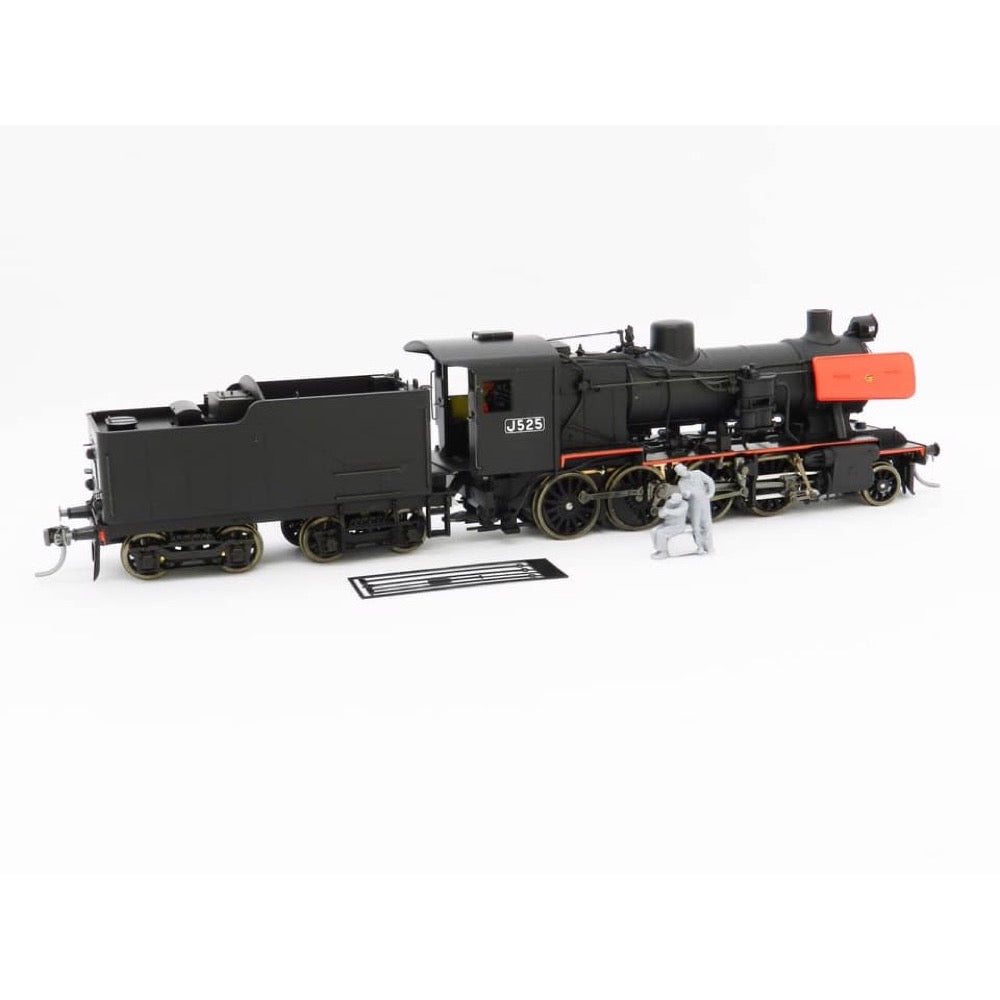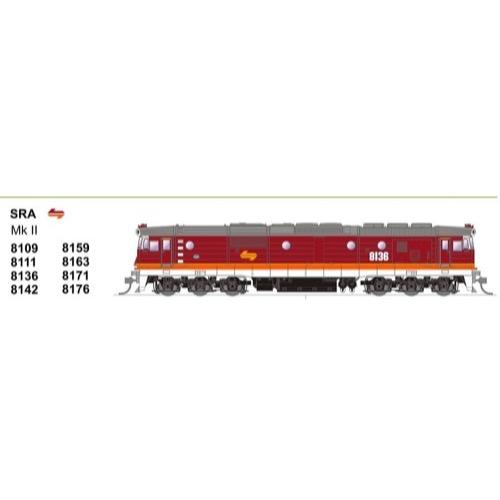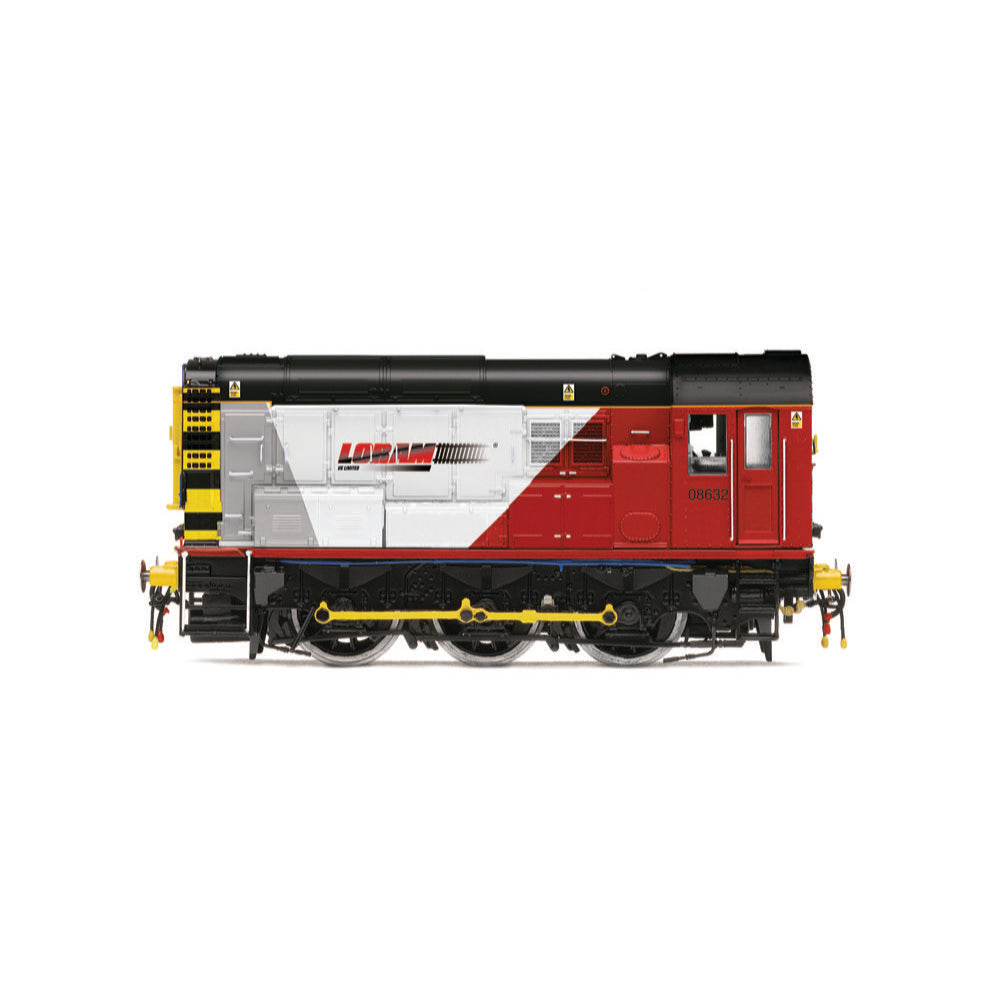
Hornby R30142 OO Loram Class 08 0-6-0 08632
Loram UK Ltd. offers a complete range of rolling stock engineering and restoration services as well as other track focused infrastructure operations with their Class 08 number 08632 being undoubtedly kept busy.
Specification
- Item Length - Without Packaging (cm): 12.4
- Item Height - Without Packaging (cm): 5
- Item Width - Without Packaging (cm): 3.5
- Item Weight - Without Packaging: 0.18
- Item Scale: 1:76 Scale 00 Gauge
- Finish: Painted
- Colour: Black, Red, White
- Gauge: OO
- DCC Status: DCC Ready 8 pin socket
- Operator: Loram
- Designer: BR
- Livery: Loram
- Minimum Curve (mm): Radius 1
- Motor: 3 Pole Skew wound
- Number of Parts: 1
- Class: Class 08
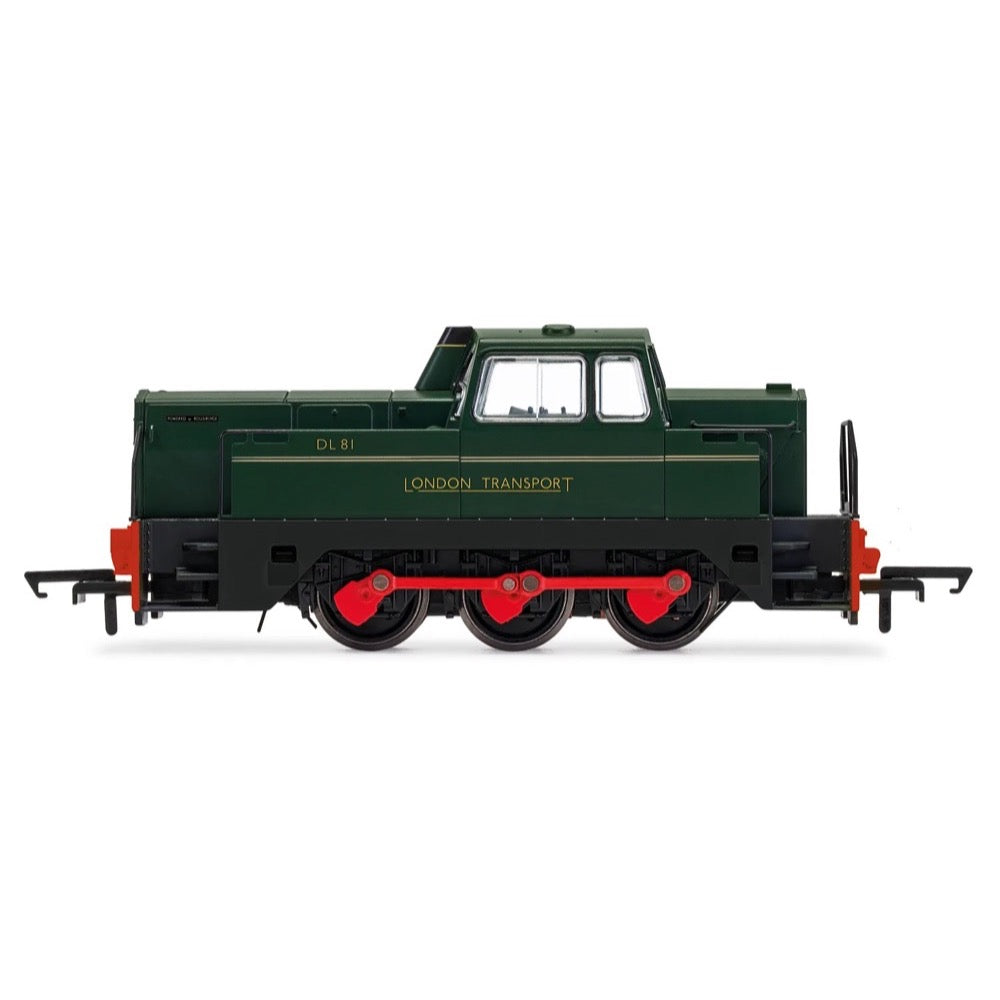
Hornby R30306 OO London Transport Sentinel 0-6-0 DL. 81 Era 7 Locomotive
Founded as Ally & MacLellan, Glasgow in 1875 and then later known as the Sentinel Waggon Works Ltd, the company went through various place and name changes until in 1957 Sentinel (Shrewsbury) Ltd was obtained by Rolls-Royce. At that time Sentinel were producing steam locomotives and lorries, but the manufacturing of these vehicles ceased in 1958. In 1959, Sentinel produced a prototype diesel shunter which was operated on the military controlled Shropshire & Montgomeryshire Railway. In total 17 were produced and operated quite successfully during that year.
The 0-6-0 Sentinel was a larger version of their first 0-4-0 example. The first such 0-6-0 example was built in 1960, with full production beginning the following year with over 100 examples being built before the end of 1971. The locomotives were fitted with 8 cylinder 325 horsepower engines. So successful was the 0-6-0 design that the a further 36 examples were built in Lisbon by Sorefame, where they were designated the Class 1151.
London Transport acquired three examples from an iron ore mine, not new, in 1971. These locomotives were intended to replace pannier tank engines still in operation and would be painted in a similar colour to their predecessors original GWR green. Each of these Sentinel locomotives would find itself coupled to a tender permanently, this tender would take the form of a bogie removed from an old district line stock unit. DL81 would be withdrawn in 1993 alongside it's two sisters and sold in to private use. Following this, it would find itself preserved at Rocks by Rail in Cottesmore.
The Hornby 0-6-0 Sentinel is a recently tooled model and a perfect addition to any small or industrial layout. The model is 6 pin DCC ready allowing for digital operation. The London Transport model features some enhanced detailing such as dumb buffers, NEM pocket covering plates and a prototypical trip cock by the wheelset.
Specification
- Item Length - Without Packaging (cm): 13
- Item Height - Without Packaging (cm): 5
- Item Width - Without Packaging (cm): 3.5
- Item Weight - Without Packaging: 0.13
- Item Scale: 1:76 Scale 00 Gauge
- Finish: Painted
- Colour: Green
- Gauge: OO
- DCC Status: DCC Ready 6 pin socket
- Operator: London Transport
- Designer: Sentinel Waggon Works
- Wheel Configuration: 0-6-0
- Livery: London Transport Green
- Minimum Curve (mm): Radius 2
- Motor: 3 Pole
- Number of Parts: 1
- Class: Diesel Shunters
- Buffer Type: Fixed Metal Buffers
- Coupling Type: NEM Tension Lock
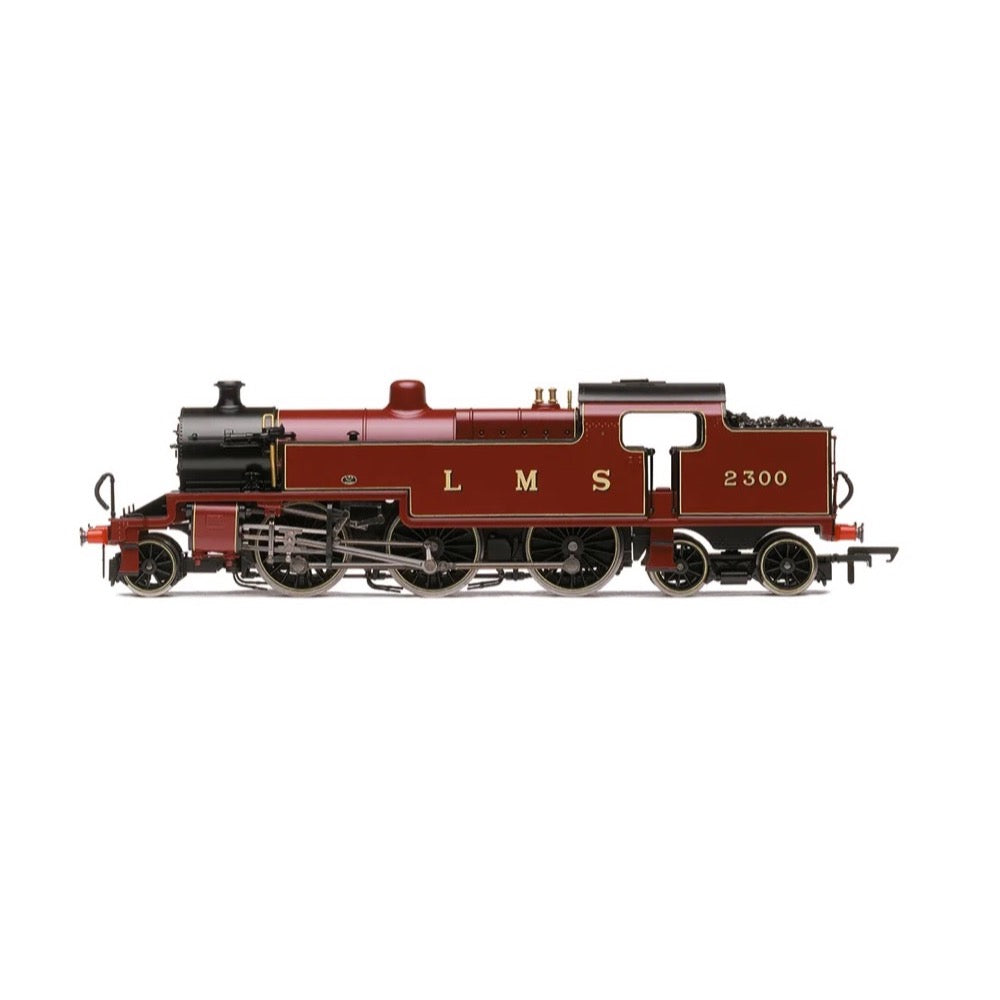
Hornby R30271 OO LMS Fowler 4P 2-6-4T 2300 Big Four Centenary Collection Era 3 Locomotive
Henry Fowler, like LMS Chief Mechanical Engineers before him, was constrained by the company's desire to stick by its small engine policy. This policy was left over from the Midland Railway, the largest constituent company of the LMS, and resulted in some iconic steam designs such as the Fowler 3F Jinty, however ignored the reality that rail operations on a national level would bring.
Suddenly entrusted with lines running from London to Scotland, the LMS would not have large express engines that it could call upon such as the LNER's A1 Pacific. While this was a policy that Fowler would eventually overcome with his Patriot design, his 4P tank engine had its DNA within the policy.
The order for the Fowler tank engine was placed in March 1927, with the first engine being delivered from Derby works on the 9th December of the same year, number 2300. This new tank engine was a behemoth, the engine had a total wheelbase of 38ft 6in, with a driving wheel span of 16ft 6in resulting from the company's idea to reuse existing coupling rods measuring 8ft and 8ft 6in respectively. The 86 ton heft of the locomotive would be spread over the six driving axles, two trailing axles and the single leading axle.
The locomotives would find themselves spread around the LMS network, finding roles on both ends of the spectrum including operating on express suburban services around cities as well as operating banking duties around Shap summit.
Locomotive 2300 was the first of the class to be delivered, rolling out of Derby works on the 9th December 1927. The locomotive would receive the number 42300 on the 26th June 1948, with withdrawal from BR service coming on 26th November 1960. For its entire career, the locomotive would be assigned to the St Albans shed.
The locomotive would not be preserved, no example of the class would be however in 2013 it was announced that a new build project was under way to bring the class back into existence.
The Hornby Fowler 4F is fitted with a 5 pole motor resulting in strong performance from this large engine, aided by the weight from its diecast chassis. The model is also 8 pin DCC ready, for those who may wish to run the model on a digital layout.
Specification
- Item Length - Without Packaging (cm): 20
- Item Height - Without Packaging (cm): 5
- Item Width - Without Packaging (cm): 3.5
- Item Weight - Without Packaging: 0.26
- Item Scale: 1:76 Scale 00 Gauge
- Finish: Painted
- Colour: Red
- Gauge: OO
- DCC Status: DCC Ready 8 pin socket
- Operator: LMS
- Designer: Sir Henry Fowler
- Wheel Configuration: 2-6-4T
- Livery: LMS Maroon
- Minimum Curve (mm): Radius 2
- Number of Parts: 1
- Buffer Type: Sprung Metal Buffers
- Coupling Type: Non-NEM Pockets
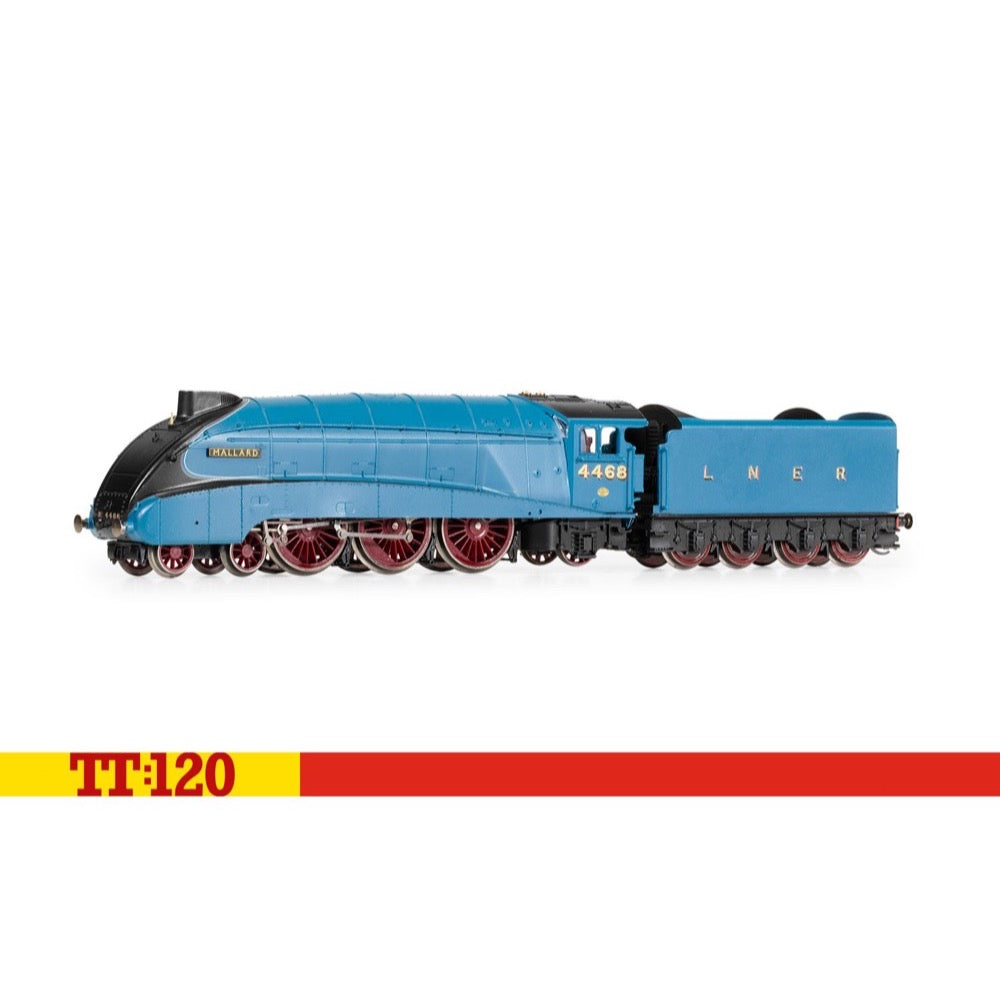
Hornby TT3007M TT LNER Class A4 4-6-2 4468 Mallard Locomotive
The LNER Gresley A4 is one of the most iconic express locomotives in Great Britain, with its streamlined casing a classic symbol of the attitude towards speed and design in the 1930s, which saw increased competition to the railways from road and air travel. The LNER Board knew that they had to make travel between the major cities faster, comfortable and more reliable.
Nigel Gresley, the LNER's Chief Mechanical Officer, travelled on the Fliegende Hamburger diesel locomotive in Germany and was impressed by its streamlining, although he realized it was only efficient at high speeds. Gresley was certain that a modified A3 Pacific, with streamlining, could haul greater loads than other locomotives at the same speed or faster and a series of trials were conducted to confirm the A3's suitability.
With the trials successfully completed, the LNER Board gave Gresley the go-ahead to create the "Silver Jubilee" streamlined trains, the first of the new streamlined A4s.The streamlining of the A4s' steam circuit, higher boiler pressure and extension of the firebox to create a combustion chamber made them more efficient than the A3 as they consumed less coal and water- especially later on when they were also fitted with a Kylchap double chimney. This improved their free steaming capabilities further. Their streamlined design not only made them capable of high speeds, but created an up draught of smoke, obscuring the driver's vision, a major problem on the new Class A4 engines. The story goes that during wind tunnel testing, after several unsuccessful efforts to get the smoke to lift clear, a thumbprint was inadvertently left on the clay model just behind the chimney. This succeeded in clearing the smoke and was incorporated into the final design.
The most famous of these A4 locomotives is surely 4468 Mallard, the locomotive that broke and still holds the world record for the highest speed achieved by a steam locomotive. This record was achieved at the height of the streamlined battle between Gresley’s A4 and the Streamline Coronation of Stanier’s LMS. Mallard would go onto serve under BR as 60022 before being withdrawn in early 1963 having been earmarked for preservation as early as 1960, its historical significance recognised and understood.
Specification
- Item Length - Without Packaging (cm): 19.1
- Item Height - Without Packaging (cm): 3.7
- Item Width - Without Packaging (cm): 2.5
- Item Weight - Without Packaging: 0.15
- Item Scale: 1:120 Scale
- License: Yes
- License line: Produced under licence for SCMG Enterprises Ltd. © SCMGE. Every purchase supports the museum.
- Finish: Painted
- Colour: Blue
- Gauge: TT
- DCC Status: Next 18 Socket (NEM 662)
- Operator: LNER
- Designer: Sir Nigel Gresley
- Wheel Configuration:4-6-2
- Livery: LNER Garter Blue
- Minimum Curve (mm): Radius 2
- Motor: 3 Pole
- Number of Parts: 1
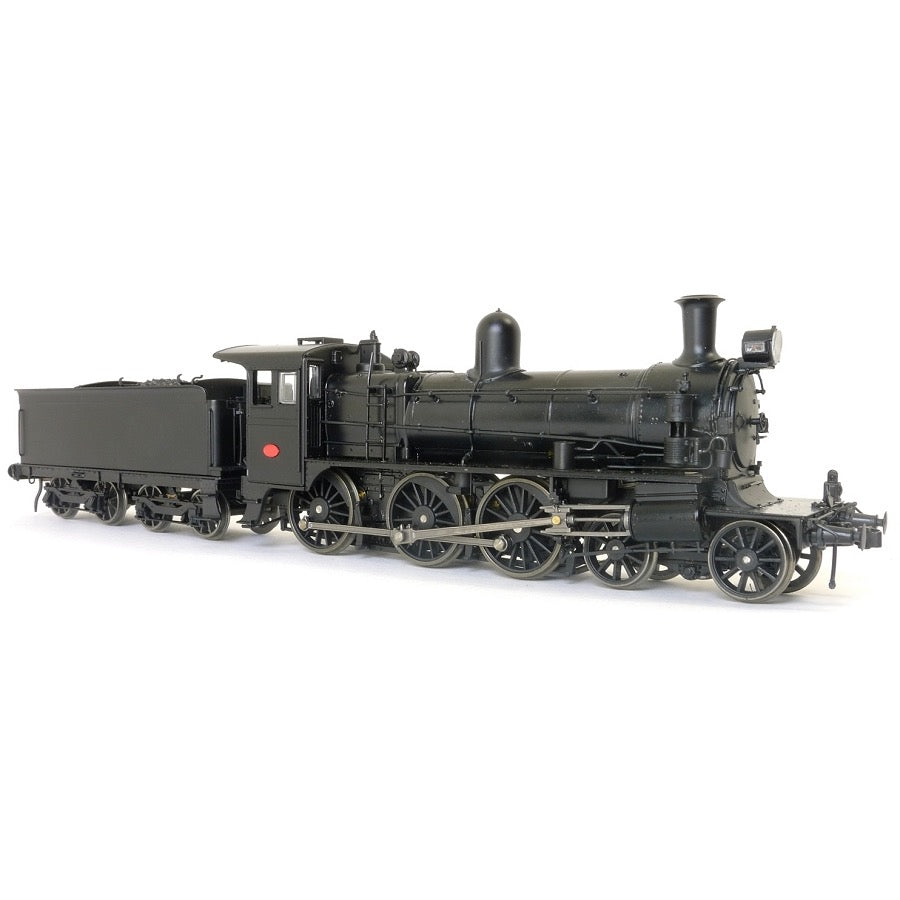
SDS Models HO D3 690 Victorian Railways D3 Class Locomotive Original Tender
In the mid 1940s several D3 class locomotives were fitted with electric headlights, some retained their earlier low sided flare top tender.
SDS Models have undertaken the production of two dedicated, and era specific, running numbers from this period. The engine units are based upon the forthcoming Phoenix Reproductions model mated with our own low sided tender. These models are being produced concurrently with the Phoenix Reproductions units and should be available Qtr1 2021.
Features
- Highly detailed Ready-to-Run HO gauge model
- Precisely tooled body
- Genuine Kadee scale head whisker coupler (Tender)
- Separately applied handrails and detail parts
- All wheel electrical pickup and Keep Alive
- LED headlights and marker lights,
- All models come standard with an MTC 21 pin motherboard
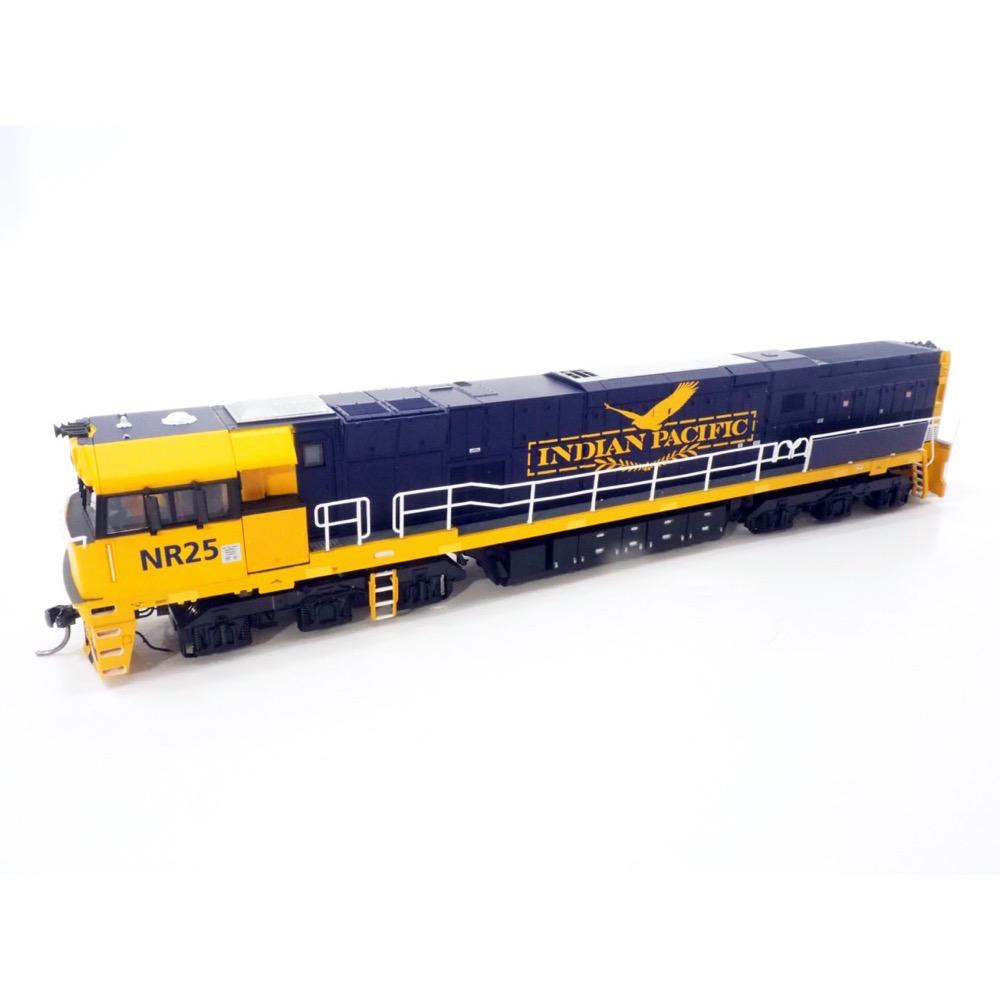
SDS Models HO NR28 Indian Pacific Mk3 NR Class Locomotive
Introduced in 1996 by National Rail Corporation these 120 units were built by A Goninan and Co. The locomotives are 3000kw General Electric powered and used on standard gauge Australia wide.
They were introduced in grey and marigold and several were painted into various business units of NRC. Later they wore GSR train liveries representing the Hook and Pull agreement between the two companies.
In 2002 Pacific National acquired the assets of NRC and commenced to repaint the NR class into their new blue and yellow colours.
The model features the current tooling from Austrains and includes operating headlights, marker and ditch lights and is Kadee equipped. These are an ideal way to add colour to your collection.
Features
- Highly detailed Ready-to-Run HO gauge model
- Precisely tooled plastic body (ABS)
- Genuine Kadee scale head whisker coupler
- Separately applied handrails and detail parts
- 5-Pole skew wound electric motor and dual flywheels
- All wheel drive and electrical pickup
- LED headlights, marker lights, number boxes and ditch lights
- All models come standard with an MTC 21 pin motherboard
Photos shown are representative of the finished model. Numbers and colours may vary on final product.
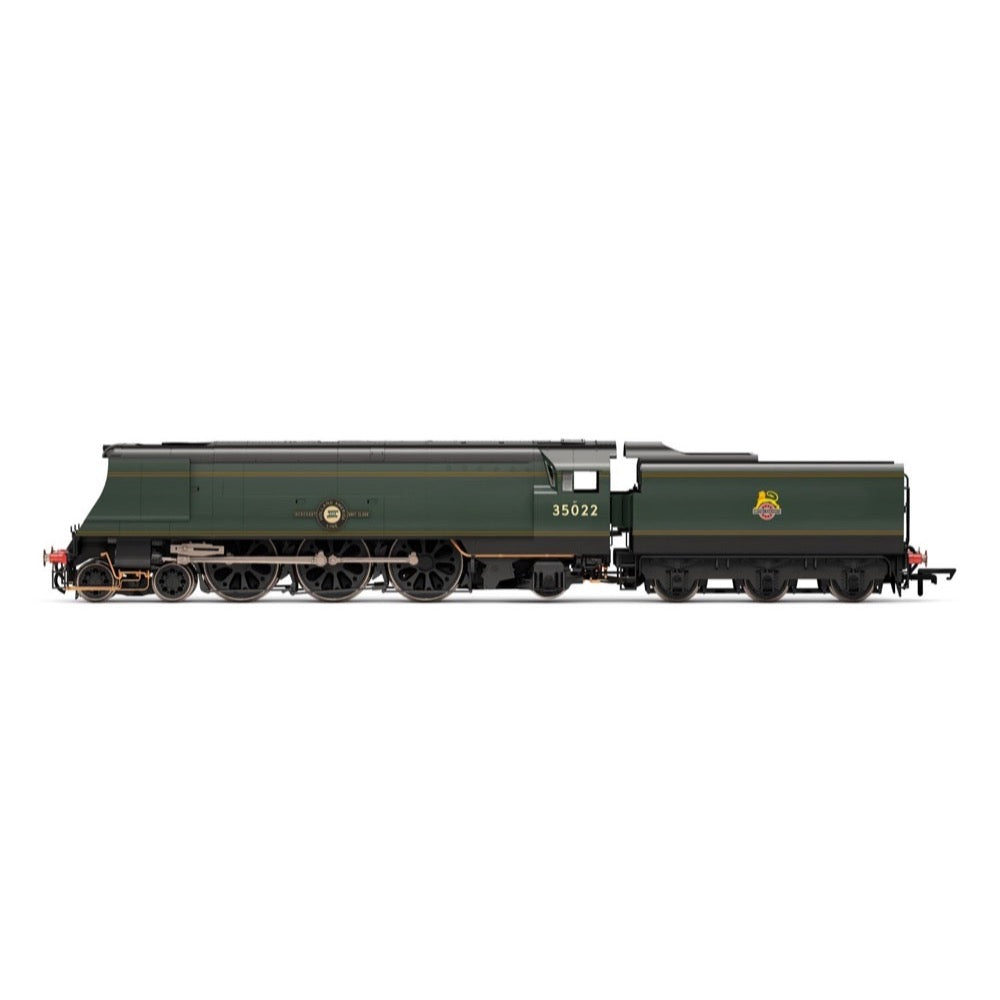
Hornby R3716 BR Merchant Navy Class 4-6-2 35022 Holland America Line - Era 4
35023 Holland America Line entered traffic on 9 October, 1948 and was named at a ceremony at Southampton Docks on 24 January, 1949.
Repainted into British Railways experimental Steam Blue in July 1950, by the beginning of February 1952 the locomotive had reverted to British Railways Green and it was in this livery that 35023 Holland America Line was sent to BR's Test Facility at Rugby in order to work on improvements to the operation of the class.
Specifications
- Item Length - Without Packaging (cm): 36.2
- Item Height - Without Packaging (cm): 5.6
- Item Width - Without Packaging (cm): 11.2
- Item Weight - Without Packaging: 0.68
- Item Scale: 1:76 Scale 00 Gauge
- License: No
- Finish: Painted
- Colour: Green
- Gauge: OO
- DCC Status: DCC Ready 8 pin socket
- Operator: British Railways
- Designer: OVS Bulleid
- Wheel Configuration: 4-6-2
- Livery: BR Green
- Minimum Curve (mm): Radius 2
- Motor: 5 Pole Skew wound
- Number of Parts: 1
- Class: Merchant Navy Class
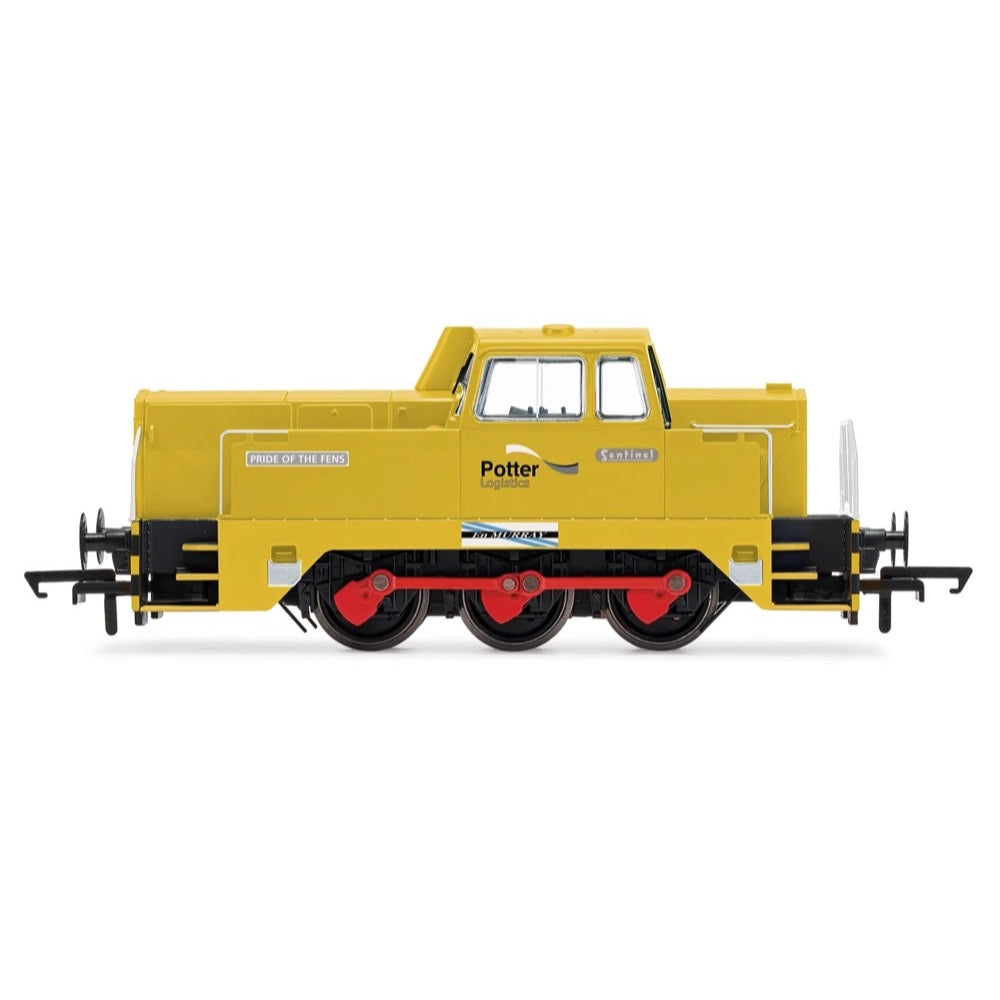
Hornby R30307 OO Potter Logistics Sentinel 0-6-0 Pride of the Fens Era 11 Locomotive
Founded as Ally & MacLellan, Glasgow in 1875 and then later known as the Sentinel Waggon Works Ltd, the company went through various place and name changes until in 1957 Sentinel (Shrewsbury) Ltd was obtained by Rolls-Royce.
At that time Sentinel were producing steam locomotives and lorries, but the manufacturing of these vehicles ceased in 1958. In 1959, Sentinel produced a prototype diesel shunter which was operated on the military controlled Shropshire & Montgomeryshire Railway. In total 17 were produced and operated quite successfully during that year.
The 0-6-0 Sentinel was a larger version of their first 0-4-0 example. The first such 0-6-0 example was built in 1960, with full production beginning the following year with over 100 examples being built before the end of 1971. The locomotives were fitted with 8 cylinder 325 horsepower engines. So successful was the 0-6-0 design that the a further 36 examples were built in Lisbon by Sorefame, where they were designated the Class 1151.
Sentinel 10255, its works number, left the production line on the 25th May 1966, being delivered into NCB ownership shortly after at their Baddesley Colliery in the South Midlands. Curiously, and unlike most other NCB examples the locomotive would not receive a running number, and would be known either by a name or its works number for most of its life. In the modern era the locomotive has changed hands a few times, being owned by Potter Logistics as their striking yellow 'Pride of the Fens' and Ed Murray and Sons.
The Hornby 0-6-0 Sentinel is a recently tooled model and a perfect addition to any small or industrial layout. The model is 6 pin DCC ready allowing for digital operation.
Specification
- Item Length - Without Packaging (cm): 13
- Item Height - Without Packaging (cm): 5
- Item Width - Without Packaging (cm): 3.5
- Item Weight - Without Packaging: 0.13
- Item Scale: 1:76 Scale 00 Gauge
- Finish: Painted
- Colour: Yellow
- Gauge: OO
- DCC Status: DCC Ready 6 pin socket
- Operator: Potter Logistics
- Designer: Sentinel Waggon Works
- Wheel Configuration: 0-6-0
- Livery: Potter Logistics Yellow
- Minimum Curve (mm): Radius 2
- Motor: 3 Pole
- Number of Parts: 1
- Class: Diesel Shunters
- Buffer Type: Fixed Metal Buffers
- Coupling Type: NEM Tension Lock
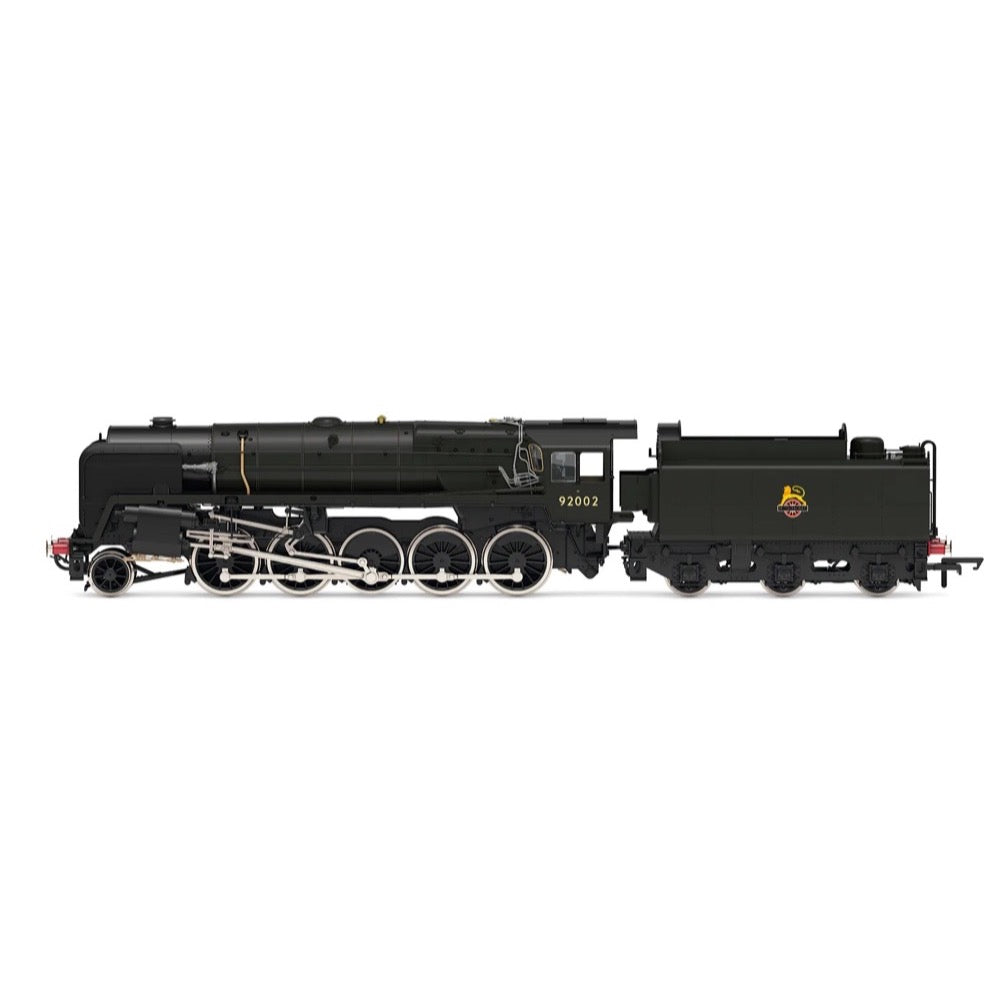
Hornby R30132 OO BR Class 9F 2-10-0 92002 Era 4 Locomotive
The British Railways Standard 9F Class was a 2-10-0 steam locomotive, the last of the standardised BR designs. The Robert Riddles design was intended as a long distance heavy express freight locomotive. In total 251 of the class were produced between January 1954 and March 1960, with the final locomotive No. 92220 'Evening Star' being the last steam locomotive built by British Railways.
The huge length of the 10 coupled driving wheels proved problematic when faced with tight curves, a situation that freight haulage would make inevitable. A solution was found by removing the flanges from the centre driving wheel and reducing the size on the flanges on the second and fourth driving axle's wheels.
Riddles had chosen the 2-10-0 wheel configuration in-order to spread the load of the boiler over a greater area. This meant that the boiler had to be raised considerably compared to other designs to allow the firebox to sit above the trailing driving wheels. As a result, the 9F features a distinctive void between the suspended boiler and the footplate.
In operation the class proved extremely versatile. Not only did the 9F excel as a freight locomotive, but when required it also succeeded as a passenger locomotive. Reports even suggest that when 92220 'Evening Star' was used to pull the Red Dragon express service between Cardiff and London it was forced to delay its arrival to allow the restaurant services to be completed, having outperformed the normal Britannia Class locomotives used on the service.
This was not the only time 9Fs had been recorded outperforming dedicated express locomotives and on such services the locomotives were capable of running at over 90mph. This combination of high speed, fast acceleration and powerful hauling capabilities mean that many consider the class to be pinnacle of British steam locomotive design.
Locomotive numbers 92165-92167 were built with a mechanical stoker. This system used a helical screw to move coal from the tender straight into the firebox. This meant that coal could be burnt a faster rate than a fireman could maintain otherwise.
Systems like this proved extremely useful on long distance American railways however in Britain it was rare for a locomotive to require such as high rate of coal delivery over a long period of time meaning that a good fireman could prove just as effective.
Locomotive 92002 was the third such locomotive to be constructed by BR, being built at Crewe in 1954. The locomotive was outshopped with the BR1G tender and in the usual BR black colour scheme. The locomotive would go on to be one of the 106 locomotives withdrawn in 1967, the locomotive would not be preserved.
The new 9F includes a fully diecast boiler and chassis adding plenty of weight allowing the pulling power of the model in 4mm scale to mirror that of the prototype. The models are presented in their authentic service colours with fully detailed and painted cabs, painted and posed crew figures and the flickering firebox feature to illuminate the lot.
Specification
- Item Length - Without Packaging (cm): 27
- Item Height - Without Packaging (cm): 5
- Item Width - Without Packaging (cm): 3.5
- Item Weight - Without Packaging: 0.45
- Item Scale: 1:76 Scale 00 Gauge
- Finish: Painted
- Colour: Black
- Gauge: OO
- DCC Status: DCC Ready 21 pin socket
- Operator: BR
- Designer: Robert Riddles
- Wheel Configuration: 2-10-0
- Livery: BR Black
- Minimum Curve (mm): Radius 2
- Motor: 5 Pole Skew wound
- Number of Parts: 1
- Buffer Type: Sprung Metal Buffers
- Coupling Type: NEM Tension Lock
- Hornby Decoder Compatibility Primary: HM7000-21TXS: Bluetooth® & DCC Sound Decoder (21-pin)
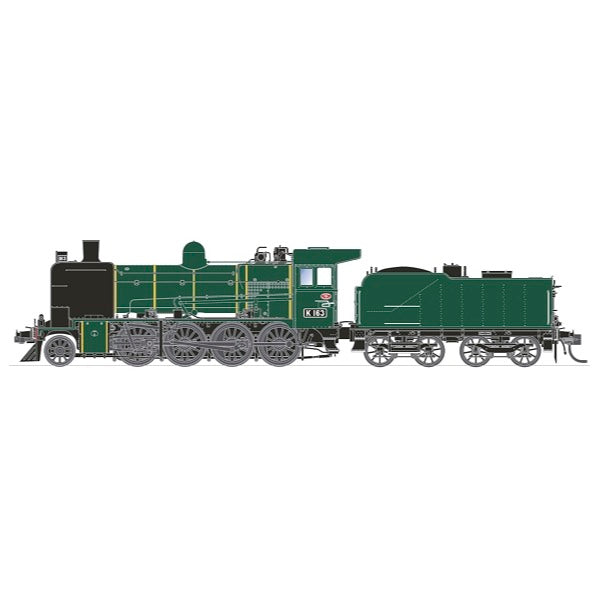
Phoenix Reproductions HO K163 Preserved Green K Class Locomotive DCC Sound
The Victorian Railways built 53 K class engines at Newport Workshops over a 24 year period, commencing in 1922. The first series of 10 engines were progressively rebuilt in the 1940s to match the performance and visual appearance of the other class members. Later in 1946 the last 9 engines entered service, these engines had single cab side windows and the last 7 engines were fitted Boxpok style driving wheels.
They were extremely versatile engines and could be found and all classes of trains, many worked until the late 1960s and several into the early 1970s.
The Phoenix Reproductions model represents the class in it's later years of government service as well as several colourful liveries of early days preservation.
Features
- Highly detailed Ready-to-Run HO gauge model
- Diecast boiler, frame and footplate
- Genuine Kadee scale head whisker coupler (Tender)
- Separately applied boiler details
- Working LED lights
- All models come standard with an MTC 21 pin motherboard
- Keep Alive Circuit
- DCC version with LokSound V5 decoder
- 22" Minimum Radius


